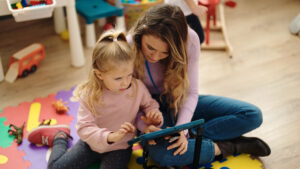Jump to...
Most of your existing procedures for handling an emergency situation will involve evacuation of the premises and will be focused on an event happening in your building.
However, in some situations, it is likely you will be advised to stay put (lockdown) rather than evacuate the premises.
In the event of an incident, ‘lockdown’ of a building or buildings is an emergency procedure to secure and protect occupants near an immediate threat.
By controlling movement in an area, emergency services can contain and handle the situation more effectively.
Be prepared
- Risk assess the likelihood of an incident happening in your area i.e. consider your location, are you near a busy tourist attraction, power station, or city centre?
- Check your police force website for advice about managing a range of issues that may be prevalent in your area. Make sure you have local police contact numbers clearly displayed for staff to refer to.
- Check the current terrorism threat level status on the MI5 website.
- Follow any advice for managing emergency situations issued by your local authority.
- Review your existing emergency procedures and add to them if necessary. Give particular consideration to ‘lockdown’.
- Share information with parents to advise them of the actions you will take in the event of a ‘lockdown’ and what they should do.
- Make sure all staff are aware of their role during ‘lockdown’.
- Consider the wording of a text or phone message that will be issued to all parents as soon as lockdown is announced and you are sure the situation is not a false alarm.
Due to an incident, we have been advised by the emergency services to secure the premises and stay put until we are given the ‘all clear’. Please do not attempt to collect your child until it is safe to do so. We will let you know as soon as we are able when that is likely to be.
In the meantime, we need to keep our telephone lines clear and would appreciate your cooperation in not calling unless it is absolutely vital that you speak to us.
Lockdown procedures
If an emergency happens, the setting manager must act quickly to assess the likelihood of immediate danger. In most cases the assumption should be that it is safer to stay put and place the setting into ‘lockdown’ until the emergency services arrive.
As soon as the emergency services arrive, it is essential staff comply with instructions at all times.
Upon alert to lockdown
- Stay calm.
- Ensure staff and children stay in their designated areas. Stay in the room you are working in, secure all doors and windows and await further instructions.
- Close curtains and blinds where possible.
- Stay away from windows and doors.
- Stay low and keep calm, it might be an idea to rehearse this with children in an age appropriate way, in the same way that you would rehearse fire evacuation. Lock-down must be rehearsed and recorded termly.
- Tune into a local TV or radio station for more information.
- Do NOT make non-essential calls on mobile phones or landlines.
- If the fire alarm is activated, remain where you are and await further instructions from emergency services unless the fire is in your area. In which case, move to the next room/area, following your usual fire procedures.
Be alert
- Do NOT open the door once it has been secured until you are officially advised ‘all clear’ or are certain it is emergency services at the door. This is another element of your ‘lockdown’ procedure that can be practised in an age-appropriate way with the children to avoid them becoming anxious when staff do not respond to the doorbell in the usual way.
- Do NOT travel down long corridors.
- Do NOT assemble in large open areas.
- Do NOT call 999 again unless you have immediate concern for your safety, the safety of others, or feel you have critical information.
Following the lockdown
- Co-operate with the emergency services to help in an orderly evacuation.
- Ensure you have the register and children’s details with you.
Any staff or children who have witnessed an attack or incident will need to tell the police what they saw.
The police may require other individuals to remain available for questioning.
Managing parents
In the event of an incident it is inevitable parents will want to come to the setting and collect their children immediately. They must be discouraged from doing so, until the emergency services give the all clear.
Even then, depending on the severity and type of incident, children may need to be checked by medical teams or questioned by the police.
It must be made absolutely clear to parents that you will be acting on the advice of the emergency services at all times.
With regard to getting information to parents during ‘lockdown’, you should use the existing systems you have in place for sending group messages, such as social media, text, emails. Discourage parents from ringing you directly for further updates during ‘lockdown’; it will be vital your phone lines remain clear.
Types of threat level
LOW means an attack is unlikely.
MODERATE means an attack is possible but not likely.
SUBSTANTIAL means an attack is a strong possibility.
SEVERE means an attack is highly likely.
CRITICAL means an attack is expected imminently.
Members of the public should always remain alert to the danger of terrorism and report any suspicious activity to the police on 999 or the anti-terrorist hotline: 0800 789 321.
For non-emergency calls to the police, call 101.
Further information
The information here is a source of guidance only and is not meant to be an exhaustive list. Every setting is responsible for all decisions they take and you should seek further guidance on any matter you are not sure about.
For more details, please see Policies and Procedures for the EYFS or Alliance members can contact us.
For advice on talking to children about current events, read our Family Corner blog post How do I talk to my child about world news?




